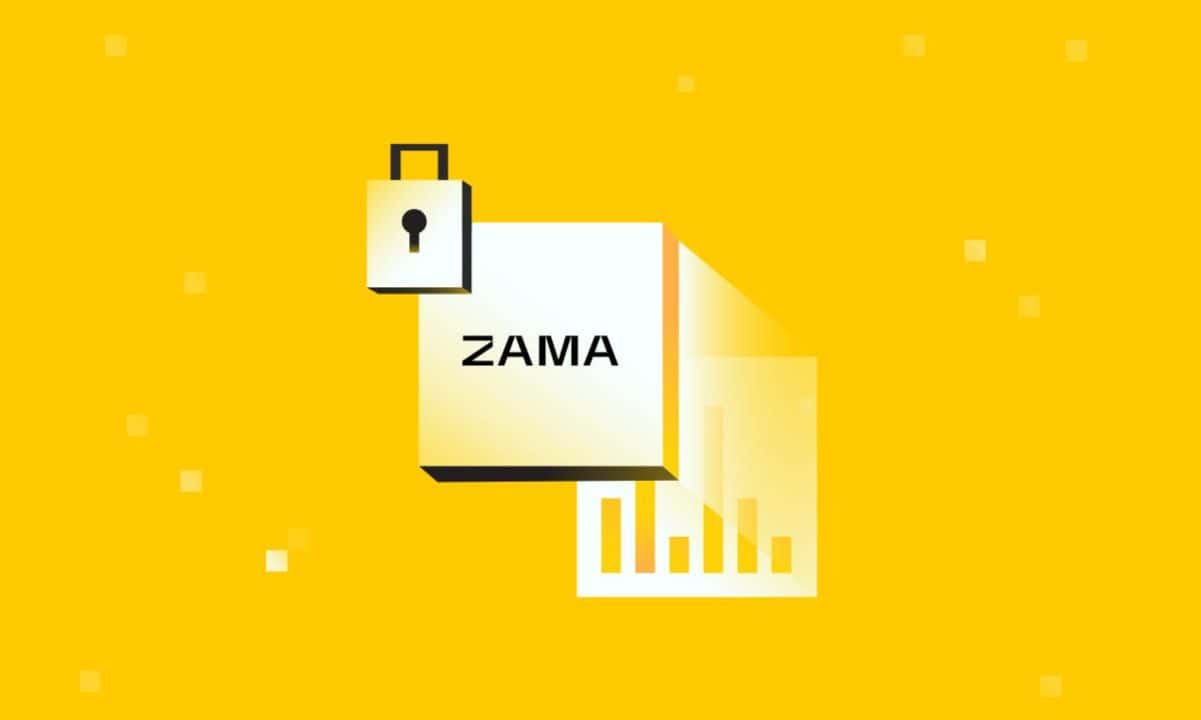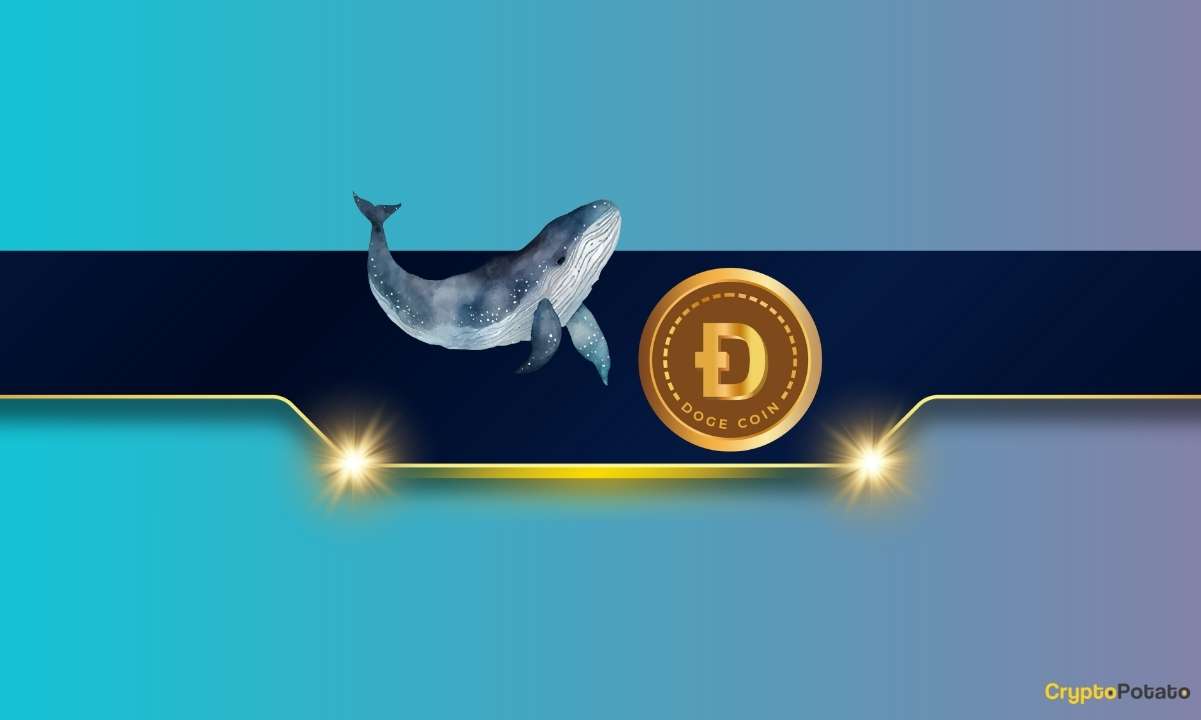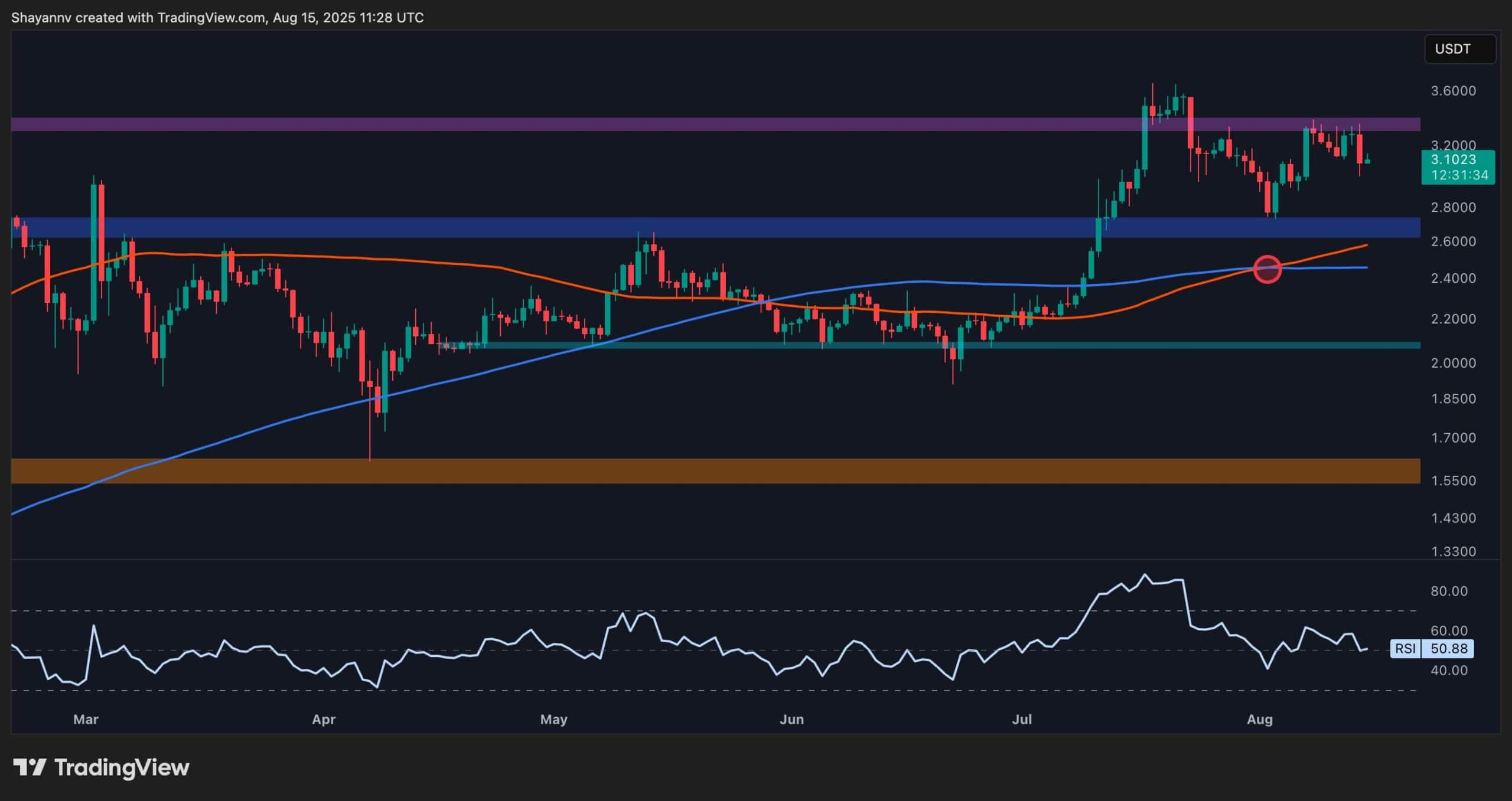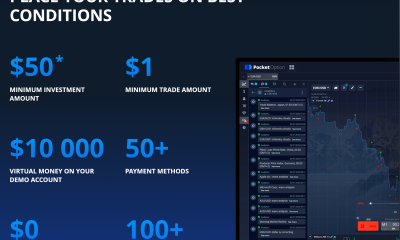Cryptocurrency
Introducing the Zama Confidential Blockchain Protocol

Ask anyone familiar with blockchain what the biggest drawbacks to the technology are: while some specific answers might vary here and there, you’ll likely find that security and privacy concerns are always high on the list, often accompanied by questions about the technology’s speed and the regulation around it.
Then why even use blockchain, if you can’t entirely trust it? After all, you’ve been managing things like finance, governance, and more without blockchain for a long time before this technology came along. What has certainly changed is the growing need for users and consumers, as well as companies and organizations, to receive adequate guarantees that the services they require are provided securely.
Transparency VS Confidentiality?
Blockchain networks are fundamentally transparent, and the fact that everything onchain is public is widely considered positive, especially when it comes to verify transactions. The downside, of course, is that all the key information about the transactions are also available, including data that you’d rather not disclose. This is where the ongoing dilemma plaguing a more widespread implementation of blockchain technology comes in: keeping transactions private prevents verifiability, but without the ability to verify the transactions the lack of transparency exposes users to uncomfortable scenarios.
The line between transparency and confidentiality becomes even more blurred when building decentralized applications (dapps). Today, all transaction details — including balances, transfer amounts, and contract states — are publicly visible onchain; this makes blockchain unusable for many institutional and consumer applications requiring privacy, which is the standard in the world of finance.
The lack of confidentiality is a big obstacle to the mass adoption of dapps, which is crucially the next frontier for blockchain. The past few years have seen a big focus on building stable infrastructures: now it’s time to build upon those infrastructures and create applications that can realise the full potential of blockchain. The key to unlocking this potential is a solution that combines the best of both worlds, shifting the conversation from “transparency VS confidentiality” to “transparency + confidentiality”, as the web did when moving from HTTP to HTTPS.
Solving the dilemma: the Zama Confidential Blockchain Protocol
Transparency, while foundational to consensus, comes at the cost of privacy. It is with the intention to overcome this problem that Zama’s team has been working tirelessly for the past couple of years. An open-source cryptography company building state-of-the-art FHE solutions for blockchain, Zama has long identified Fully Homomorphic Encryption (FHE) – a technology that enables processing data without decrypting it – as the groundbreaking technique that can change the way users, businesses and organizations think about privacy.
From the start, blockchain seemed the perfect environment to dive into and develop the full potential of FHE, a long and complex exploration culminating with the launch of the Zama Confidential Blockchain Protocol.
The Zama Protocol resolves the longstanding tension between transparency and confidentiality onchain. Combining FHE coprocessors, threshold Multi-Party Computation (MPC), and Zero-Knowledge Proofs (ZKPs), the protocol enables private computation in public environments.
This is the most complete confidentiality protocol to date, allowing developers to code fully confidential smart contracts using familiar tools like Solidity without modifying the underlying blockchain by offering a few key elements:
- End-to-end encryption of transaction inputs and state
- Composability between confidential contracts, as well as with non-confidential ones
- Programmable privacy, with smart contracts defining who can decrypt what, making it easy to build dapps that comply with regulations globally
As outlined in the Zama Protocol Litepaper, the protocol introduces a novel cross-chain confidentiality layer that can operate on top of existing blockchains. With these characteristics, the Zama Protocol enables confidential smart contracts to run seamlessly across any Layer 1 or Layer 2 network, extending privacy guarantees without altering the underlying infrastructure.
Beyond FHE
The Zama Protocol heavily leverages the ability to securely compute directly on encrypted data. For this reason, FHE has long been considered the “holy grail” of cryptography, despite slow speed and limitations to ease of use: this is why Zama’s team has worked to deliver a technology that can support any type of application, using common programming languages such as Solidity and Python, while being over 100x faster than a few years ago.
With the goal to create a game-changing comprehensive protocol meeting all the requirements to deliver a fully confidential blockchain, the team worked outside the familiar confines of FHE. As the main component powering the protocol, Zama’s library FHEVM makes it possible to run confidential smart contracts on encrypted data: combining this with MPC to ensure secure collaboration and ZK for verifiability, Zama looks to overcome the main shortcomings of each individual solution.
Unlocking new possibilities
One of the main motivations behind Zama’s dedication to this project is the growing demand for privacy-preserving primitives in blockchain. Whilst there is an increasing interest for solutions from confidential token transfers to stablecoins, from private DeFi to privacy-preserving identity and compliance, none of these can currently be safely deployed on public chains without confidentiality guarantees.
- Finance & Banking: Secure transaction processing, risk modeling, and confidential onchain payments, making blockchain technology suitable for financial institutions.
- Confidential DeFi: Private smart contracts and dapps apps that fully protect user data.
- FHE State OS & Network States: Strong confidentiality for onchain communities and network states, supporting democratic governance while protecting sensitive information.
- End-to-End Encrypted Transactions & State: All data in transactions is encrypted and never exposed, ensuring complete confidentiality.
- Onchain Composability & Data Availability: Smart contract states are continuously updated while remaining fully encrypted, preserving both composability and privacy.
Thanks to this approach, adopters of the Zama Protocol can enjoy all the advantages of the different techniques without limitations: verifiability, decentralization, scalability, composability, security and, crucially, ease of use for developers.
To usher in what aims to be a revolution for onchain privacy with its protocol, Zama has launched a public testnet (read more about it on the official Zama Protocol documentation), providing developers with a ready-to-build foundation for privacy-preserving decentralized applications. This will allow anyone to deploy and test their confidential dapps, as well as enabling operators to coordinate and get used to the operations.
Disclaimer: The above article is sponsored content; it’s written by a third party. CryptoPotato doesn’t endorse or assume responsibility for the content, advertising, products, quality, accuracy, or other materials on this page. Nothing in it should be construed as financial advice. Readers are strongly advised to verify the information independently and carefully before engaging with any company or project mentioned and do their own research. Investing in cryptocurrencies carries a risk of capital loss, and readers are also advised to consult a professional before making any decisions that may or may not be based on the above-sponsored content.
Readers are also advised to read CryptoPotato’s full disclaimer.
Binance Free $600 (CryptoPotato Exclusive): Use this link to register a new account and receive $600 exclusive welcome offer on Binance (full details).
LIMITED OFFER for CryptoPotato readers at Bybit: Use this link to register and open a $500 FREE position on any coin!
Cryptocurrency
Ethereum Foundation, Whales, and Hackers: What’s Driving the ETH Sell-Off?

TL;DR
- Whales, hackers, and the Ethereum Foundation wallets moved over $500M in ETH through large sales and withdrawals.
- Ethereum transfers rose to 4.6M ETH, nearing the monthly high of 5.2M recorded in July.
- Staking inflows hit 247,900 ETH, the highest in a month, locking more supply from trading.
Large Withdrawals and Whale Activity
Ethereum (ETH) has seen heavy movement from major wallets over the past few days. On-chain data from Lookonchain shows a newly created wallet pulled 17,591 ETH, worth $81.62 million, from Kraken in just two hours.
Over three days, two new wallets withdrew a combined 71,025 ETH, valued at $330 million, from the exchange.
One of these wallets, address 0x2A92, has withdrawn 53,434 ETH, worth $242.34 million, in two days. This includes a recent purchase of 30,069 ETH, valued at $138.46 million, during a market drop.
Major ETH Holders Offload Millions Amid Price Rally
In contrast, several separate entities have been disposing of some ETH holdings. A wallet tied to a hacker address 0x17E0 sold 4,958 ETH for $22.13 million at $4,463, securing a profit of $9.75 million. Earlier this year, the same address sold 12,282 ETH at $1,932 and later bought back part of the amount at higher prices.
A different whale sold 20,600 ETH for $96.55 million over the past two days, generating a profit of more than $26 million after holding the position for nine months.
Meanwhile, an Ethereum Foundation-linked wallet, 0xF39d, sold 6,194 ETH worth $28.36 million in the last three days at an average price of $4,578.
Recent sales from the same wallet included an additional 1,100 ETH and 1,695 ETH for over $12.7 million combined.
The #EthereumFoundation-linked wallet(0xF39d) sold another 1,300 $ETH($5.87M) at $4,518 ~11 hours ago.
Over the past 3 days, this wallet has sold a total of 6,194 $ETH($28.36M) at an average price of $4,578.https://t.co/4hfCWymHVG pic.twitter.com/ErUyEY8SJy
— Lookonchain (@lookonchain) August 15, 2025
Network Activity on the Rise
CryptoQuant data shows Ethereum’s total tokens transferred have been climbing since August 9. After ranging between 1 million and 3 million ETH through late July and early August, transfers have risen to 4.6 million ETH, approaching the monthly high of 5.2 million recorded in mid-July. This increase has occurred alongside a price rally from about $3,400 to $4,600.
Interestingly, staking inflows generally stayed between 20,000 and 80,000 ETH per day over the past month. On August 14, inflows jumped to 247,900 ETH, the highest in the period.
At the time, ETH was trading near $4,600. Large staking deposits reduce the amount of ETH available for immediate trading, as staked coins are locked for a set period.
In the meantime, ETH trades at $4,647 with a 24-hour volume of $68.25 billion, down 2% on the day but up 19% over the week.
Binance Free $600 (CryptoPotato Exclusive): Use this link to register a new account and receive $600 exclusive welcome offer on Binance (full details).
LIMITED OFFER for CryptoPotato readers at Bybit: Use this link to register and open a $500 FREE position on any coin!
Cryptocurrency
Massive DOGE Whale Activity Hints at $1 Breakout

TL;DR
- Whales bought two billion DOGE this week, lifting their combined holdings to 27.6 billion coins.
- A single 900M DOGE transfer worth $208M to Binance drew attention to large exchange movements.
- DOGE broke key resistance, with momentum building for a possible push toward the $1 price mark.
Price and Market Moves
Dogecoin (DOGE) traded at $0.23 at press time, slipping 4% over the past day but still showing a 2% gain for the week. Daily turnover came in at about $6.18 billion.
Meanwhile, the broader crypto market saw over $1 billion in liquidations. Hotter-than-expected US Producer Price Index data pushed traders to scale back expectations of a near-term Federal Reserve rate cut. DOGE had roughly 290,500 coins liquidated during the sell-off.
On the two-week chart, analyst Trader Tardigrade notes that DOGE has cleared a downward-sloping resistance line after completing what appears to be a “wave V” in an Elliott Wave sequence. Similar setups in the past, where prolonged declines stayed within falling channels before breaking higher, have been followed by sharp rallies.
$Doge/2-week#Dogecoin is gaining strong momentum to surge above $1 pic.twitter.com/TuSEKr19nv
— Trader Tardigrade (@TATrader_Alan) August 15, 2025
Momentum gauges are also turning up. The Stochastic RSI, which had dropped into oversold territory, is now heading higher. Previous reversals from this zone have coincided with sustained upward moves. The current formation points to a possible run that could carry DOGE past the $1 mark.
Heavy Whale Buying and Large Transfers
As reported by CryptoPotato, blockchain data shows large investors have added two billion DOGE in the past week, spending just under $500 million. That brings their holdings to about 27.6 billion coins, or 18% of the supply. The buying streak has prompted speculation within the community.
Recently, Whale Alert flagged a 900 million DOGE transfer worth about $208 million into Binance. The tracking indicates that it originated from a wallet connected to the exchange, likely as an internal activity. The address involved holds 2.88 billion DOGE, one of the largest balances on the network.
Ali Martinez also reports that transactions above $1 million reached a one-month high, with activity building since early August and peaking as DOGE traded at $0.25.
Whales are back! Dogecoin $DOGE activity at a 1-month high. pic.twitter.com/C83Pv68mCt
— Ali (@ali_charts) August 14, 2025
Sentiment Building
Analyst Gordon described the current setup as “a nice bit of consolidation” before a potential breakout, adding,
“This will be one of the first coins normies FLOCK to & the pump will be MASSIVE.”
With whale accumulation rising, high-value transfers increasing, and a bullish technical pattern in play, DOGE is positioned for a potential push toward $1 if momentum holds.
Binance Free $600 (CryptoPotato Exclusive): Use this link to register a new account and receive $600 exclusive welcome offer on Binance (full details).
LIMITED OFFER for CryptoPotato readers at Bybit: Use this link to register and open a $500 FREE position on any coin!
Cryptocurrency
Ripple Price Analysis: XRP at Risk as Key Support Levels Could Trigger Sharp Drop

XRP has recently entered a consolidation phase after a strong rally earlier this summer, with the price action now hovering around key resistance levels on both its USDT and BTC pairs. Yet, while momentum has slowed, the charts still indicate a generally bullish structure, with multiple key support levels remaining firmly in place.
Technical Analysis
By ShayanMarkets
The USDT Pair
On the XRP/USDT daily chart, the price is currently trading near the $3.10 mark, facing a strong resistance zone around $3.40. This follows a breakout above the $2.70 range in July, which has now flipped into a support area.
Both the 100-day and 200-day moving averages are also trending upward and recently formed a bullish crossover around $2.45, reinforcing the medium-term bullish sentiment. If the $3.40 resistance breaks, a push toward the critical $4.00 range becomes likely.
However, the RSI hovering near the neutral 50 level suggests a lack of strong momentum for now, meaning a short-term pullback into the $2.80 support zone is still possible.
This zone will be key for maintaining the bullish structure. Losing it could open the door for a deeper correction toward the 200-day moving average located around the $2.40 mark. Yet, as long as the price stays above the moving averages, the broader trend remains bullish.
The BTC Pair
Looking at the XRP/BTC chart, the pair has recently pulled back after hitting the 3,000 SAT resistance, with the price currently around 2,600 SAT.
This follows a clean breakout above the long-term descending channel and a successful retest of its upper boundary, which coincided with the 200-day moving average and the 2,400 SAT support zone. This confluence remains a key bullish technical factor, as holding above it could attract renewed buying pressure.
That said, RSI levels around 48 show that momentum has cooled after the sharp July rally, meaning XRP may continue ranging between 2,400 SAT and 3,000 SAT in the near term. A decisive close above 3,000 SAT would likely open the path to the 3,400 SAT zone, while losing 2,400 SAT could shift the bias back toward 2,000 SAT support. For now, the structure still favors the bulls as long as higher lows remain intact.
Binance Free $600 (CryptoPotato Exclusive): Use this link to register a new account and receive $600 exclusive welcome offer on Binance (full details).
LIMITED OFFER for CryptoPotato readers at Bybit: Use this link to register and open a $500 FREE position on any coin!
Disclaimer: Information found on CryptoPotato is those of writers quoted. It does not represent the opinions of CryptoPotato on whether to buy, sell, or hold any investments. You are advised to conduct your own research before making any investment decisions. Use provided information at your own risk. See Disclaimer for more information.
Cryptocurrency charts by TradingView.

 Forex3 years ago
Forex3 years agoForex Today: the dollar is gaining strength amid gloomy sentiment at the start of the Fed’s week

 Forex3 years ago
Forex3 years agoUnbiased review of Pocket Option broker

 Forex3 years ago
Forex3 years agoDollar to pound sterling exchange rate today: Pound plummeted to its lowest since 1985

 Forex3 years ago
Forex3 years agoHow is the Australian dollar doing today?

 Cryptocurrency3 years ago
Cryptocurrency3 years agoWhat happened in the crypto market – current events today

 World3 years ago
World3 years agoWhy are modern video games an art form?

 Commodities3 years ago
Commodities3 years agoCopper continues to fall in price on expectations of lower demand in China

 Economy3 years ago
Economy3 years agoCrude oil tankers double in price due to EU anti-Russian sanctions





















